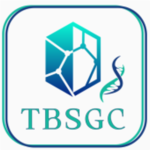We use a variety of chemigenomic approaches to support projects in the TBSGC.
To systematically define subcellular protein localization in mycobacteria, we developed a method for high-throughput imaging of a library of fluorescently tagged proteins expressed in Mycobacterium smegmatis and develop a customized computational pipeline to analyze these data. Our results establish a spatial organization network of over 700 conserved mycobacterial proteins and reveal a coherent localization pattern for many proteins of known function, including those in translation, energy metabolism, cell growth and division, as well as proteins of unknown function. Furthermore, our pipeline exploits morphologic proxies to enable a pseudo-temporal approximation of protein localization and identifies previously uncharacterized cell-cycle-dependent dynamics of essential mycobacterial proteins.
We are applying these tools to study proteins and complexes whose structures are being solved by the TBSGC.


Current chemotherapy against Mtb requires a multidrug regimen lasting several months. While efforts have been made to optimize therapy by exploiting drug–drug synergies, testing new drug combinations in relevant host environments remains arduous. Host environments profoundly affect the bacterial metabolic state and drug efficacy, limiting the accuracy of predictions based on in vitro assays alone. We have employed chemical-genetic interaction screens to characterize biological pathways in vivo and to understand how Mtb responds and adapts to drug therapy. Many proteins being solved by the TBSGC are involved directly as drug targets or in vulnerable pathways, or indirectly as mechanisms of resistance through stress response, efflux or changes in cell-wall permeability, or metabolic adaptation.
Our team utilizes next-generation sequencing to unlock the power of genomics in our studies of Mtb proteins. We also develop and employ a suite of genetic approaches, including generation of mycobacterial mutant strains (including under- and over-expression of targeted proteins) for biological studies, tagged strains for localization studies, and resistance-associated mutant strains for inhibitor studies. These methods can generate pairs of a novel druggable target and a cognate compound that can bind to them. Compounds that bind a protein can often help to promote crystallization, and can also serve as potential starting points for structure-based drug design.
We have developed genetic tools that broadly useful for genetic engineering in mycobacteria, such as oligo-mediated recombineering.

A recent study by one of our labs presents a novel dose-response model tailored for analyzing chemical-genetic interactions within CRISPR interference (CRISPRi) screens.
We also perform bioinformatic analysis of TnSeq data (sequencing of transposon-insertion mutant libraries) to determine genes that are essential under defined conditions, which can provide information on protein function and pathway associations. TnSeq analysis can also be used to identify functional interactions between genes. We can also incorporate analysis of transcriptomic, phylogenetic, and genetic knockdown vulnerability data to help understand gene function.
